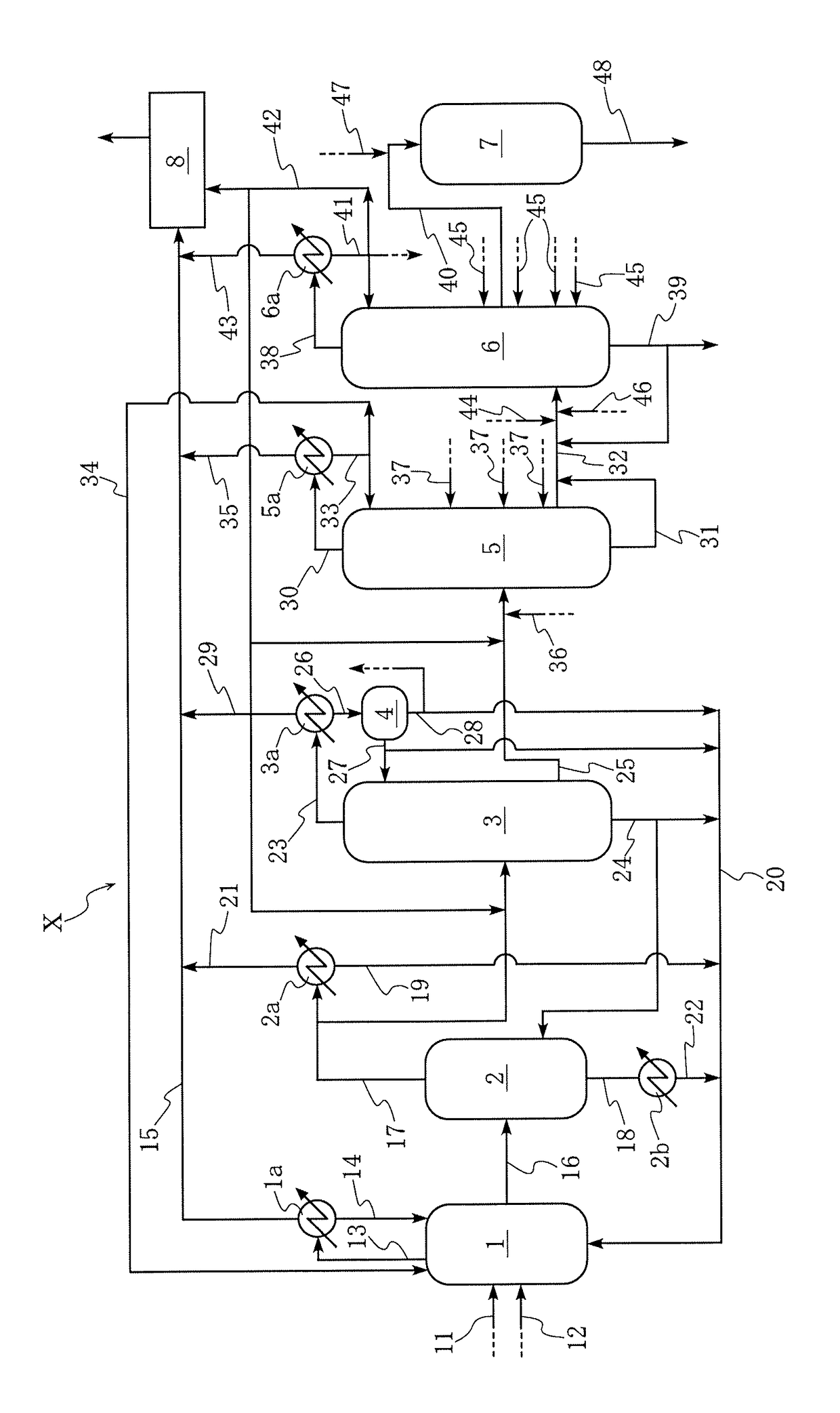Method for producing acetic acid
a technology of acetic acid and production method, which is applied in the direction of physical/chemical process catalyst, metal/metal-oxide/metal-hydroxide catalyst, separation process, etc., can solve the problems of acetic acid production plant corrosion, and achieve the effect of reducing the rate of iodine-caused corrosion
- Summary
- Abstract
- Description
- Claims
- Application Information
AI Technical Summary
Benefits of technology
Problems solved by technology
Method used
Image
Examples
example 1
[0079]Acetic acid was produced using the acetic acid production equipment X illustrated in the FIGURE. In this process, the equipment was operated so that the second acetic acid stream from the distillation column 5, which serves as a dehydration column, included, as a composition, 510 ppm of water, 105 ppm of propionic acid, 1 ppm of methyl acetate, 17 ppm of formic acid, 100 ppb of hydrogen iodide, 120 ppb of iodine ion, 5 ppb of methyl iodide, 10 ppb of hexyl iodide, and 49 ppm of potassium in the form of potassium oxide, with the remainder approximately being acetic acid. In the production process, the second acetic acid stream from the distillation column 5 was introduced into the distillation column 6, which serves as a high-boiling component removing column, and subjected to distillation (third distillation step) therein. The distillation column 6 used herein was a 12-plate column (column including 12 plates). The distillation in the distillation column 6 was performed in the...
example 2
[0082]Acetic acid was produced using the acetic acid production equipment X by a procedure similar to that in Example 1, except for performing the distillation in the distillation column 6 as follows. Specifically, the distillate was removed from the column top in an amount (removed distillate amount) of 60 grams per hour instead of 6 grams per hour, and the side stream (third acetic acid stream) was drawn from the distillation column 6 in an amount of 944 grams per hour instead of 998 grams per hour. Except for using a distillate formed herein in the distillation in the distillation column 6, a corrosivity evaluation test was performed by a procedure similar to that in Example 1. Results of the chemical composition analyses in Example 2 are presented in Table 1, and results of the corrosion rate measurements and the visual examinations in Example 2 are presented in Table 3. This is the same also for Examples 3 to 6 as follows.
example 3
[0083]Acetic acid was produced using the acetic acid production equipment X by a procedure similar to that in Example 1; and a corrosivity evaluation test was performed by a procedure similar to that in Example 1, except for using a testing liquid having a methanol concentration of 200 ppm, where the testing liquid was prepared by adding methanol to the distillate to be subjected to the corrosivity evaluation test.
PUM
| Property | Measurement | Unit |
|---|---|---|
| temperature | aaaaa | aaaaa |
| temperature | aaaaa | aaaaa |
| temperature | aaaaa | aaaaa |
Abstract
Description
Claims
Application Information
 Login to View More
Login to View More - R&D
- Intellectual Property
- Life Sciences
- Materials
- Tech Scout
- Unparalleled Data Quality
- Higher Quality Content
- 60% Fewer Hallucinations
Browse by: Latest US Patents, China's latest patents, Technical Efficacy Thesaurus, Application Domain, Technology Topic, Popular Technical Reports.
© 2025 PatSnap. All rights reserved.Legal|Privacy policy|Modern Slavery Act Transparency Statement|Sitemap|About US| Contact US: help@patsnap.com

